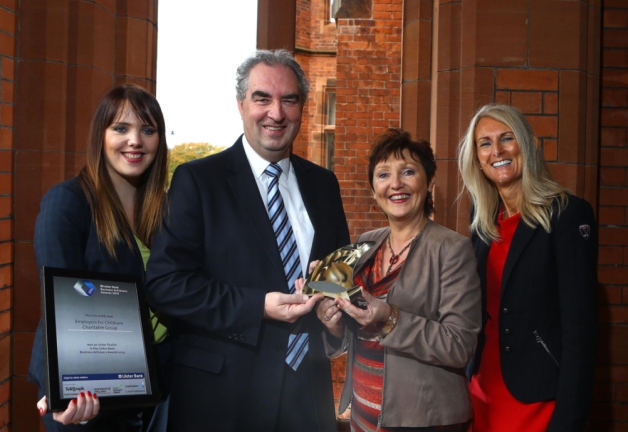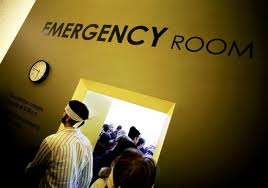Government Grants
Business Grants
Home Owner Programs
Federal Programs
About Us
Rural Child Poverty Telehealth Network Grant Program
This announcement solicits applications for the Rural Child Poverty Telehealth Network Grant Program (RCP-TNGP).
The RCP-TNGP is a three-year pilot program to support established telehealth networks to develop innovative ways to address the unique health care challenges faced by children living in impoverished rural areas. The U. S. Department of Agriculture (USDA) defines poverty as having an income below a federally determined poverty threshold.
Recent data from USDA indicates higher poverty rates in rural areas than in urban areas.
The rural area(s) to be served will be identified by the applicant, and should be supported by the use of county and sub-county level data to describe the poverty levels in their target area and the unmet needs of children to be served.
Many of the largest drivers of health care costs fall outside the clinical care environment.[1] These non-medical drivers have costly implications for health care utilization:
500,000 hospitalizations would be averted annually if the rate of preventable hospitalizations were the same for residents of low-income neighborhoods as for those of high-income neighborhoods,[2] and hospital readmission rates are more closely related to community characteristics than to hospital characteristics.[3] For the purposes of this FOA, applicant networks should include human/social service providers to the extent that the provision of those services can be tied directly back to improving the health care status of low-income rural children served via telehealth and distance learning technology. For the purpose of this funding, human/social services are defined as early childhood development, food and nutrition support and education, economic support programs related to the family of the children served including awareness and counseling and or referral related to available job training and economic support, housing and other social service supports. In providing services beyond the clinical setting, applicants will be required to demonstrate how the provision of information and referral for those human/social services through the telehealth network will ultimately benefit the health of children served through this grant funding. The goal of the RCP-TNGP is to demonstrate how telehealth networks can expand access to, coordinate and improve the quality of health care services for children living in impoverished rural areas and in particular how such networks can be enhanced through the integration of social and human service organizations.
[1] Milstein B, Homer J, Briss P, Burton D, Pechacek T.
Why behavioral and environmental interventions are needed to improve health at lower cost.
Health Affairs.
2011 May;30(5):823–32; McGinnis JM, Williams-Russo P, Knickman JR.
The case for more active policy attention to health promotion.
Health Affairs.
2002 Mar-Ap;21(2):78–93 [2] Moy E, Chang E, Barrett M. Potentially preventable hospitalizations – United States, 2001–200 9. MMWR.
2013 November; 62(3);139-14 3. [3] Herrin J, St Andre J, Kenward K, Joshi MS, Audet AM, Hines SC.
Community factors and hospital readmission rates.
Health Serv Res 2014 April 9 (Epub ahead of print).
The RCP-TNGP is a three-year pilot program to support established telehealth networks to develop innovative ways to address the unique health care challenges faced by children living in impoverished rural areas. The U. S. Department of Agriculture (USDA) defines poverty as having an income below a federally determined poverty threshold.
Recent data from USDA indicates higher poverty rates in rural areas than in urban areas.
The rural area(s) to be served will be identified by the applicant, and should be supported by the use of county and sub-county level data to describe the poverty levels in their target area and the unmet needs of children to be served.
Many of the largest drivers of health care costs fall outside the clinical care environment.[1] These non-medical drivers have costly implications for health care utilization:
500,000 hospitalizations would be averted annually if the rate of preventable hospitalizations were the same for residents of low-income neighborhoods as for those of high-income neighborhoods,[2] and hospital readmission rates are more closely related to community characteristics than to hospital characteristics.[3] For the purposes of this FOA, applicant networks should include human/social service providers to the extent that the provision of those services can be tied directly back to improving the health care status of low-income rural children served via telehealth and distance learning technology. For the purpose of this funding, human/social services are defined as early childhood development, food and nutrition support and education, economic support programs related to the family of the children served including awareness and counseling and or referral related to available job training and economic support, housing and other social service supports. In providing services beyond the clinical setting, applicants will be required to demonstrate how the provision of information and referral for those human/social services through the telehealth network will ultimately benefit the health of children served through this grant funding. The goal of the RCP-TNGP is to demonstrate how telehealth networks can expand access to, coordinate and improve the quality of health care services for children living in impoverished rural areas and in particular how such networks can be enhanced through the integration of social and human service organizations.
[1] Milstein B, Homer J, Briss P, Burton D, Pechacek T.
Why behavioral and environmental interventions are needed to improve health at lower cost.
Health Affairs.
2011 May;30(5):823–32; McGinnis JM, Williams-Russo P, Knickman JR.
The case for more active policy attention to health promotion.
Health Affairs.
2002 Mar-Ap;21(2):78–93 [2] Moy E, Chang E, Barrett M. Potentially preventable hospitalizations – United States, 2001–200 9. MMWR.
2013 November; 62(3);139-14 3. [3] Herrin J, St Andre J, Kenward K, Joshi MS, Audet AM, Hines SC.
Community factors and hospital readmission rates.
Health Serv Res 2014 April 9 (Epub ahead of print).
Agency: Department of Health and Human Services
Office: Health Resources and Services Administration
Estimated Funding: $975,000
Office: Health Resources and Services Administration
Estimated Funding: $975,000
Obtain Full Opportunity Text:
Not Available
Additional Information of Eligibility:
A) Eligibility and Geographic Requirements: Eligible applicants include rural or urban nonprofit entities that will provide services through a telehealth network. Each entity participating in the networks may be a nonprofit or for-profit entity. Faith-based, community-based organizations and tribal organizations are eligible to apply. Services must be provided to rural areas, although the applicant can be located in an urban area.
TNGP grantees that were funded in 2012 and 2013, and Evidence-Based TNGP grantees funded in 2014 are eligible to apply for funds through this announcement for the FY 2015 cycle. The proposed project must differ from any of the previous projects and focus on the health care needs of children living in impoverished rural areas.
B) Composition of the Telehealth Network: The Telehealth Network shall include at least two (2) of the following entities (at least one (1) of which shall be a community-based health care provider): Community or migrant health centers or other federally qualified health centers Health care providers, including pharmacists, in private practice Entities operating clinics, including rural health clinics Local health departments Nonprofit hospitals, including community access hospitals Other publicly funded health or human/social service agencies Long-term care providers Providers of health care services in the home Providers of outpatient mental health services and entities operating outpatient mental health facilities Local or regional emergency health care providers Institutions of higher education Entities operating dental clinics
Full Opportunity Web Address:
Contact:
Department of Health and Human Services, Health Resources and Services Administrationcmena@hrsa.gov
Agency Email Description:
Contact Carlos Mena at (301)443-3198 or email cmena@hrsa.gov
Agency Email:
cmena@hrsa.gov
Date Posted:
2015-05-07
Application Due Date:
2015-07-06
Archive Date:
2015-08-21
Social Entrepreneurship
Spotlight
Childcare Charitable Group Named Top Social Enterprise

Employers For Childcare Charitable Group (EFCG), a Lisburn-based charity, has been crowned top Social Enterprise at the Ulster Final of 2014’s Ulster Bank Business Achievers Awards. EFCG seeks to “make it easier for parents with dependent children to get into work and to stay in work.”

